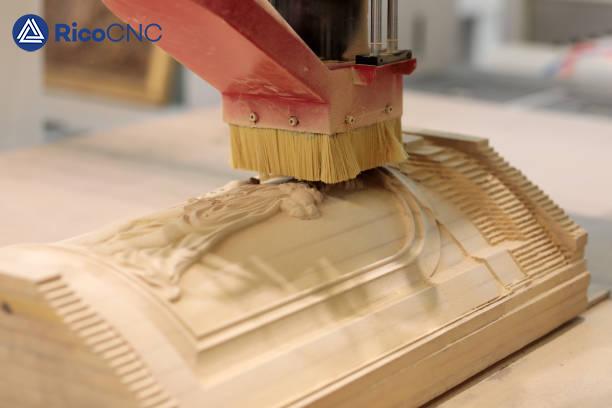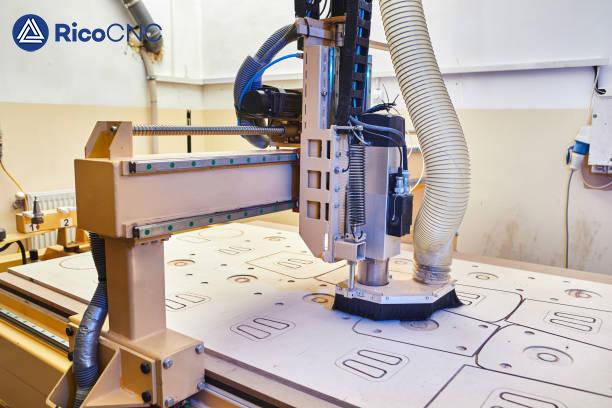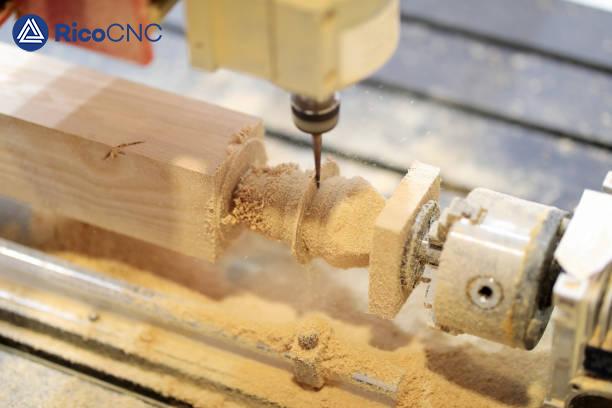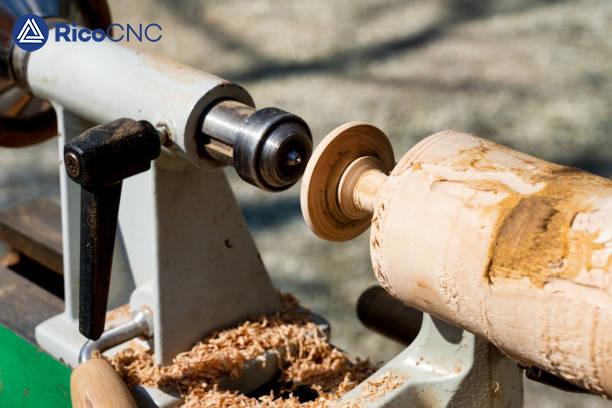
Selecting the right CNC wood lathe tools can be the difference between a smoothly running operation and a frustrating endeavor. With the many types of cutting tools available, understanding which tool works best for your specific application is crucial. This comprehensive guide provides everything you need to know about choosing the appropriate tools for your CNC wood lathe, enhancing your efficiency and ensuring the highest quality outcomes.
CNC wood lathe tools are specialized devices used for machining wood into desired shapes. These tools help in transforming raw pieces of wood into well-crafted products, using various processes such as cutting, shaping, drilling, and finishing. The selection of suitable CNC lathe tools will ultimately influence the quality of the finish, the efficiency of production, and the life of your machinery.
· Precision and Efficiency: CNC wood lathe tools make it possible to achieve high levels of precision, which is crucial for creating complex designs with intricate details.
· Different Operations: Depending on the operation—such as roughing, finishing, or parting—you need to use a different cutting tool. This section will help you understand the basic types and their applications.
· Tool Material and Properties: Different materials like high-speed steel (HSS), carbide, and diamond are used in these tools. Each material has specific properties, affecting factors like wear resistance, hardness, and cutting speed.

Understanding the types of cutting tools used in CNC wood lathe machines is fundamental to selecting the right one for a particular job. Each tool has a specific role to play, and the choice depends on the type of workpiece and the desired finish.
Rough turning tools are used for the initial stages of machining, where large amounts of material need to be removed quickly. These tools usually have a large cutting edge and can withstand high cutting forces.
· Material: Typically made from high-speed steel or carbide, rough turning tools need to be durable and resistant to wear.
· Application: They are most often used when the focus is on reducing the workpiece to a general shape rather than finishing.
· Cutting Edge: The cutting edge is typically blunt to ensure that it can handle heavy loads.
Unlike rough turning tools, finishing turning tools are used to give the workpiece its final dimensions and an enhanced surface finish. These tools are precise and deliver fine cuts to bring out the desired contours.
· Material: Usually made from carbide or diamond due to their excellent wear resistance and ability to deliver a smooth finish.
· Application: Finishing tools are applied at lower speeds and feed rates to produce a better surface finish.
· Cutting Edge: The cutting edge of finishing tools is sharp and fine to allow delicate cutting, thus creating smooth surfaces.
Using the right finishing tool and keeping it in good condition can greatly reduce tool life cycle costs and improve the efficiency of the operation.

The effectiveness of a CNC wood lathe tool is not just dependent on the material but also the geometry of the cutting edge. The cutting edge, rake angle, and relief angle significantly influence the tool's performance.
· Cutting Edge: The cutting edge should be selected based on the type of operation—whether it is rough turning, finishing, or profiling. It determines the ease of material removal and influences the final surface quality.
· Rake Angle: This is the angle formed between the cutting edge and the workpiece surface. A positive rake angle facilitates easier cutting, while a negative rake angle increases edge stability.
· Relief Angle: The relief angle helps in minimizing friction between the tool and the workpiece, which prolongs tool life and ensures a better finish.
The type of material used in CNC wood lathe tools is an important factor that affects performance. Different materials provide different levels of hardness, toughness, and wear resistance. Let's explore the most commonly used tool materials:
High-Speed Steel (HSS) is one of the oldest materials used for cutting tools, and it remains popular for its toughness and affordability.
· Hardness: While not as hard as carbide, HSS tools are tough, making them suitable for general-purpose use where cutting conditions are not extremely harsh.
· Wear Resistance: HSS tools have moderate wear resistance, and they are ideal for softer woods and materials that do not cause significant abrasion.
· Cost: HSS tools are cost-effective and are often the first choice for machinists working on a budget.
"HSS tools provide a great balance of cost, toughness, and versatility, making them ideal for general-purpose wood lathe operations." – RicoAutomation Experts
Carbide tools are the go-to choice for more demanding applications that require greater hardness and wear resistance. Carbide tools are often used in high-speed operations.
· Application: These tools work well for hard woods and more challenging cutting conditions.
· Heat Resistance: Carbide's excellent resistance to heat means it can be used at high cutting speeds without compromising tool life.
· Surface Finish: Carbide tools also tend to produce a finer surface finish compared to HSS.

For operations that require ultimate precision and wear resistance, diamond-tipped tools are the best choice. These tools are suitable for finishing operations and are used in applications where even the slightest imperfection cannot be tolerated.
· Application: Diamond-tipped tools are perfect for hard wood or composite materials, often used in high-end furniture manufacturing.
· Wear Resistance: With unmatched wear resistance, these tools provide a long-lasting solution, though they come with a higher upfront cost.
There are several types of operations performed using CNC wood lathes, each requiring specific tools and configurations to ensure optimal outcomes.
Rough turning is typically the first operation carried out on a wood lathe. Its objective is to quickly remove excess material and bring the workpiece to a general shape.
· Tools: Rough turning tools are typically made from HSS or carbide.
· Application: The emphasis is on material removal rate rather than surface quality.
Once the rough turning is complete, finishing turning is employed to achieve a smoother surface and bring the workpiece to its final dimensions.
· Tools: Carbide or diamond-tipped tools are commonly used.
· Application: The focus is on quality, ensuring a smooth finish and precise dimensions.
Parting involves cutting off a portion of the workpiece, while grooving is used to create narrow channels on the surface.
· Tools: Parting tools are thin blades specifically designed for cutting through the workpiece, and they have a sharp cutting edge to minimize resistance.
CNC wood lathe tools are typically made from high-speed steel (HSS), carbide, or diamond, each having unique properties suited for specific applications.
Consider the material of the tool, cutting edge geometry, rake angle, relief angle, and the specific operation (e.g., roughing, finishing).
Carbide tools provide higher hardness and wear resistance, making them suitable for more challenging cutting conditions, while HSS tools are more cost-effective and versatile for general use.
Finishing tools are used to achieve precise dimensions and a high-quality surface finish, typically used in the final stages of machining.
The rake angle influences how easily the tool cuts through the material, impacts chip flow, and affects the overall efficiency of the cutting process.
Diamond-tipped tools provide unmatched wear resistance and precision, ideal for operations that require a flawless surface finish.

Choosing the right CNC wood lathe tool involves considering a variety of factors including the tool material, geometry, and the specific type of machining operation. By understanding the properties of materials like high-speed steel, carbide, and diamond, as well as knowing the appropriate tools for roughing, finishing, and parting, you can significantly enhance the quality of your work and the efficiency of your operation. Whether you are machining soft wood or hard composite materials, having the right tools can make all the difference.
Explore our range of automation components that can further assist in optimizing your wood lathe machining processes, enhancing both efficiency and precision. Visit our servo drive section for more innovative solutions.
Contact: RicoCNC
Phone: 0086-13390848665
Tel: 0086-51268235075
Email: cncsale@ricocnc.com
Add: NO. 60, Weixin Road, Industrial Park, Suzhou, Jiangsu, China, 215000
 online service
online service 0086-15264185266
0086-15264185266 cncsale@ricocnc.com
cncsale@ricocnc.com